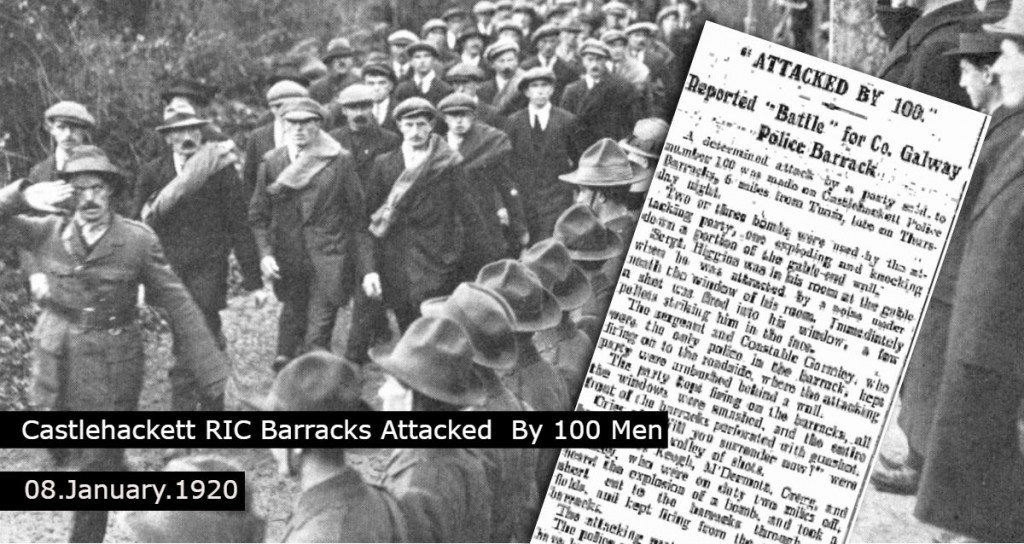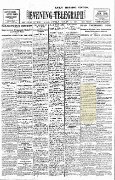
In January 1920 the War of Independence intensified with the IRA carrying out a number of offensives in almost every county. To mark the anniversary of this aspect of the campaign, this month we offer stories about the conflict as reported by the newspapers of the day.
Late on the night of the 8 January 1920 the RIC barracks at Castlehackett, county Galway was attacked by the IRA, who it was reported numbered over 100 men. Sergeant Higgins was in the room near the gable of the barrack when he heard a noise from a window underneath. Almost immediately, shots were fired into the room and he was hit by pellets. The attackers located behind a ditch ceased firing shouting ‘will ye surrender now’. The police refused to accept surrender and returned fire. Some two miles away while on duty Constables Keogh, McDermott, Cregg and Glancy heard the firing and an explosion of a bomb. Taking a shortcut through the fields, they came to the barracks by the rear and began to fire on the attackers. The police tried in vain to apprehend some of the attackers and their searches continued until daylight.
In his Military Witness Statement made in 1955, John Conway recalled the decision to attack the RIC barracks at Castlehackett at Christmas time, when it was believed the police would be ‘lax’ and not expecting a raid. Remarkably, a decision was taken not to attack the barrack on 6 January as it was a holy night and so it was deferred to the following day. According to Conway the IRA numbered about fifty men made of up from two companies, which was half the RIC estimate of those present. Led by Michael Walsh, who was armed with a Russian rifle, the volunteers assembled at a limekiln about 400 metres from the barrack. Although gelignite had been laid at the barrack it failed to damage the building and so after more than five hours of gunfire, the IRA retreated.


